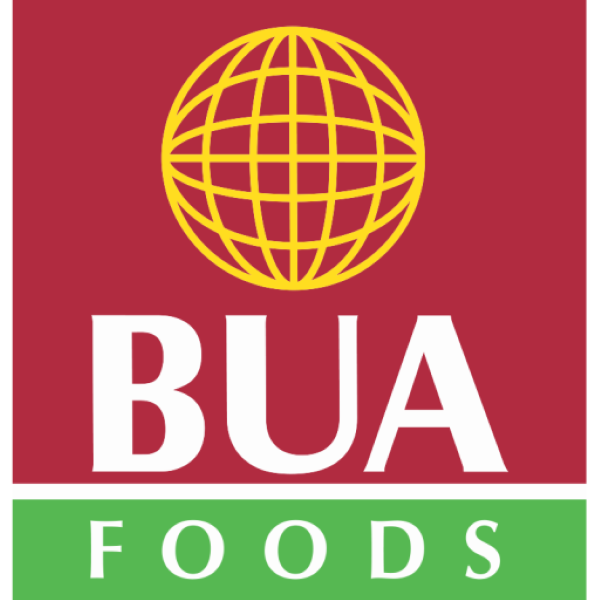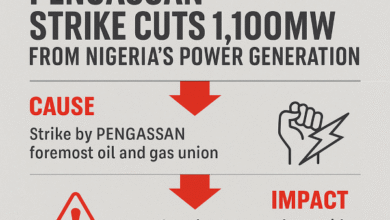BUA Foods Delivers Robust Q1 2025 Growth, Profit Soars 124%

BUA Foods Plc, one of Nigeria’s foremost integrated food companies, has posted a strong start to the 2025 financial year, recording a 24% surge in revenue to ₦442.1 billion for Q1, compared to ₦356.9 billion in the same period of 2024.
The company’s performance underscores its growing influence in Nigeria’s fast-moving consumer goods (FMCG) sector, driven by robust demand, strategic diversification, and efficient operational execution.
In a corporate statement issued on Thursday, Managing Director Dr. Ayodele Abioye said BUA Foods achieved a 39% increase in gross profit, reaching ₦160.91 billion, while profit after tax (PAT) more than doubled — rising 124% year-on-year to ₦125.28 billion. Shareholders also enjoyed significant value creation, with Earnings Per Share (EPS) climbing from ₦3.10 in Q1 2024 to ₦6.96 in Q1 2025.
Segment Performance: Flour and Rice Take Centre Stage
A breakdown of the company’s revenue streams reveals a dynamic reshaping of its product portfolio. The flour segment delivered a 145% increase, contributing ₦176.2 billion — a testament to rising demand amid competitive pricing and wider distribution reach.
Even more dramatic was the rice category, which soared by an eye-popping 1,617% to ₦13.02 billion. This reflects the company’s intensified push into the rice value chain, an increasingly strategic food security segment aligned with Nigeria’s drive to reduce import dependency.
The pasta segment also showed solid growth, rising 12% to ₦41.5 billion. However, sugar — historically BUA Foods’ flagship segment — saw a modest decline of 11%, generating ₦211.3 billion versus ₦238.2 billion in Q1 2024. The dip is likely tied to pricing pressure and heightened competition in the refined sugar market.
Cost Pressures and Margin Management
Operating expenses rose by 56% to ₦22.39 billion, largely driven by increases in logistics, marketing, and distribution. Selling and distribution expenses alone grew 13% to ₦11.08 billion. Despite these cost pressures, the company’s margin management and scale efficiencies helped fuel its remarkable bottom-line growth.
“Our proactive supply chain strategy and internal efficiency improvements enabled us to maintain momentum in a high-cost macroeconomic environment,” Dr. Abioye stated.
Strategic Positioning and Outlook
With total equity climbing 29.2% to ₦554.34 billion, BUA Foods’ balance sheet remains strong, giving it ample firepower for future expansions, innovation, and backward integration — especially in flour milling, sugar refining, and agribusiness.
The company’s integrated business model continues to serve as a competitive moat, allowing it to manage costs, control quality, and respond rapidly to consumer trends.
“As we operate in a gradually stabilising economy, BUA Foods is well-positioned to leverage opportunities in Nigeria’s growing food consumption market,” said Abioye. “We remain focused on deepening market penetration and accelerating innovation to meet changing consumer needs.”
Business Insights: What This Means for the FMCG Landscape
BUA Foods’ Q1 performance sends a clear signal to investors and competitors alike: the company is consolidating its leadership in the FMCG space by hedging against market volatility through diversified offerings. The dramatic growth in flour and rice suggests a deliberate pivot toward essential staples, aligning with national food security priorities and consumer affordability trends.
However, the slight slump in sugar revenue may prompt a reassessment of competitive strategies in that segment. With Dangote Sugar Refinery and other players intensifying investments, BUA’s response in the coming quarters will be closely watched.
Conclusion
As inflation and currency volatility continue to shape Nigeria’s consumer landscape, BUA Foods’ ability to navigate headwinds while delivering value signals a mature, resilient, and forward-looking operation. For shareholders and policy stakeholders, its Q1 results reaffirm the potential of homegrown manufacturers in shaping the future of food in Africa’s largest economy.











